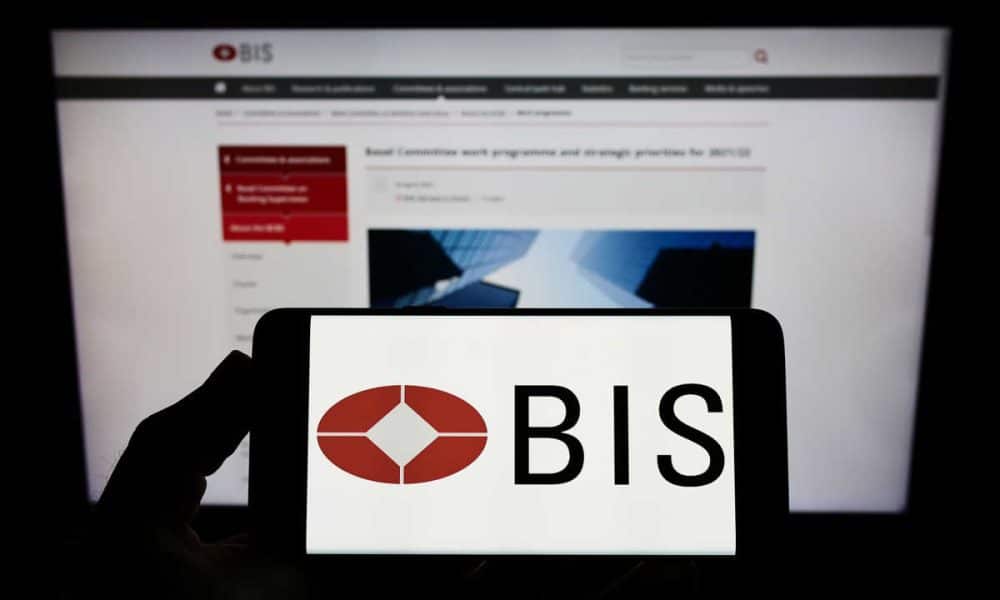A new platform to broaden the use of China’s digital currency and other central bank digital currencies is getting closer to reality, which has some supporters of the long-dominant US dollar system scratching their heads.
Several European and American observers now see the Beijing-backed digital prototype for transporting money around the world without relying on US banks as an emerging threat to dollar-denominated payments in international finance because of how swiftly it is developing.
According to four sources familiar with the project, the mBridge project—which is being developed by China, Thailand, Hong Kong, and the United Arab Emirates—should have a basic working product ready by the end of the year.
mBridge is a cooperative project with the Bank for International Settlements (BIS), a center for international central-bank cooperation with headquarters in Switzerland.
Huge stakes are involved. According to figures from the BIS and the United Nations, the dollar is used in an estimated $6.6 trillion worth of foreign exchange transactions every day, and it accounts for half of the $32 trillion in annual worldwide trade.
By allowing the Chinese yuan’s digital version to settle significant business transactions, mBridge may eventually make it simpler for people to accept it as a substitute for the dollar.
Although though the platform has been openly developed since 2017, some American and European officials who keep tabs on it are growing increasingly concerned that it could give China a head start in leveraging digital currency to revolutionize cross-border wholesale payments.
Others claim that a digital substitute for dollar-based settlement might make it simpler to avoid sanctions, taxes, and money-laundering laws while fragmenting international payments into rival systems that exacerbate geopolitical tensions.
Josh Lipsky, director of the GeoEconomics Center at the Atlantic Council, a US research tank, claimed that the development of mBridge at the BIS had “raised eyebrows” in Washington.
When viewed in isolation, the project raises concerns about China’s plans to lessen its reliance on dollar-based settlement systems, according to Lipsky. Yet the BIS is where some of the most cutting-edge research in the sector is being conducted, so China is cooperating with them, along with dozens of other central banks.
The initiative is being coordinated by the BIS Innovation Hub, whose deputy head is Ross Leckow. He stated there is currently no date for when the system would be operational following this stage of development. He explained that the next step is to determine whether the prototype can become a minimal viable product.
A minimal viable product will be released next year, according to the Hong Kong Monetary Authority, who also noted that the project builds on the “G-20 priority to experiment with employing new technologies to produce cheaper and safer real-time cross-border payments and settlements.”
Days vs seconds
The initiative’s objective of resolving “pain points” in cross-border transfers has received commendation from the Bank of Thailand. According to an e-mailed answer to questions from Bloomberg, it claimed that mBridge could reduce cross-border transfer times for trade-finance transactions from as many as five days to “few seconds”. Also, “additional participating governments to join” would “provide more advantage to end-users and commercial institutions.”
In response to written inquiries about mBridge, neither the Central Bank of the UAE nor the People’s Bank of China provided an answer.
At least six ongoing studies at central banks are looking at how digital currencies, also known as CBDCs, might be used to enhance cross-border payments, and one of them is mBridge. Even as development continues, its potential as a complete replacement for the correspondent banking system that currently connects lenders worldwide is still up for debate.
The International Monetary Fund held discussions in April on how to eventually place such a crucial platform under the control and supervision of an international organization, according to people familiar with the situation who asked to remain anonymous discussing private information. Nevertheless, mBridge is thought to be so far along.
According to one of the persons, the IMF wants to prevent the initiative from changing from a technical fix to a geopolitical tool.
The April discussions were “technical” in nature and did not specifically mention mBridge, according to Federico Grinberg, a senior economist in the IMF’s monetary and capital markets division. He added that the IMF had no intention of placing any existing platform under international control or supervision.
Given the disproportionate benefits of improving cross-border payments for emerging and lower-income countries, the IMF deems it crucial that its broad membership be included in this conversation, he said.
Because it might still be difficult to transfer money across borders, study into the flow of digital money is a booming field. A coordinated series of messages between private banks and central banks is necessary for transfers in order to start and confirm each step of the procedure. While many of these transactions can be completed in less than an hour, others, particularly when involving smaller nations and currencies, can take days to complete.
Companies all over the world heavily rely on the dollar due to its liquidity and comparatively constant value.
The US benefits politically and economically as a result. It also implies that a significant amount of international financial transactions must go via US-licensed banks that are subject to US taxation, sanctions, and regulation.
But sending money across borders is just as cumbersome, if not cumbersomer, as other transactions. Settlement usually takes place during US business hours and may be delayed by a holiday in any of the nations involved, creating a need for a platform like mBridge, which stands for multiple CBDC bridge.
The claim is that everything might be considerably simpler if the transactions took place on a digital rail made possible by blockchain technology.
Role of trade finance
According to the mBridge project report, trade financing is one of the most significant intended uses, with a flow of products and services valued at $564 billion between the participants.
After participating commercial banks have exchanged cash for tokenized currency at their central bank, it is intended to enable big transfers and foreign exchange operations directly between them. And by utilizing distributed ledger technology, which is the same platform upon which Bitcoin is based, such transactions may take place almost instantly, seven days a week, at any time.
According to the most recent project report, in August and September of last year, mBridge’s partners and commercial banks in their various nations carried out a pilot trial that enabled roughly 160 transactions with a value of $22 million.
With the use of the technology, a business in China might pay a supplier in the UAE by requesting that its bank issue a digital e-yuan token via the People’s Bank of China on the mBridge blockchain, or ledger. There, this token could be instantly credited to the vendor’s bank in the United Arab Emirates, which would subsequently deposit dirham, the local currency, into the vendor’s account.
Two individuals with direct knowledge of the project claim that the Chinese-built blockchain serves as the foundation of mBridge’s technological architecture.
Leckow refuted the claim, claiming that the initiative is a team effort and that “several distributed ledgers were established with assistance from the four central banks” and the BIS. Without the assistance of the other parties, the program “would not be scalable by any one single entity,” he continued.
As part of the testing on the mBridge platform, he added, “each participant commercial bank is required to comply with applicable rules and regulations, including those relating to tax compliance, money laundering, and sanctions enforcement.” According to the BIS, there are 23 international observers in total for the initiative, including the US Federal Reserve and the European Central Bank.











